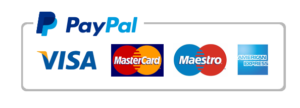1) Minimum 6 full pages (No word count per page)- Follow the 3 x 3 rule: minimum three paragraphs per page
Part 1: minimum 1 page
Part 2: minimum 1 page
Part 3: minimum 4 pages
Submit 1 document per part
2)¨******APA norms
All paragraphs must be narrative and cited in the text- each paragraph
Bulleted responses are not accepted
Don’t write in the first person
Don’t copy and paste the questions.
Answer the question objectively, do not make introductions to your answers, answer it when you start the paragraph
Submit 1 document per part
3)****************************** It will be verified by Turnitin (Identify the percentage of exact match of writing with any other resource on the internet and academic sources, including universities and data banks)
********************************It will be verified by SafeAssign (Identify the percentage of similarity of writing with any other resource on the internet and academic sources, including universities and data banks)
4) Minimum 3 references (APA format) per part not older than 5 years (Journals, books) (No websites)
Part 3: Minimum 5 references (APA format) per part not older than 5 years (Journals, books) (No websites)
All references must be consistent with the topic-purpose-focus of the parts. Different references are not allowed.
5) Identify your answer with the numbers, according to the question. Start your answer on the same line, not the next
Example:
Q 1. Nursing is XXXXX
Q 2. Health is XXXX
6) You must name the files according to the part you are answering:
Example:
Part 1.doc
Part 2.doc
__________________________________________________________________________________
Part 1: Trends and Issues in Health care
1. Discuss the events that have contributed (or will continue to contribute) to the nursing shortage, or that contribute to a shortage in a region or specialty.
2. Discuss at least one way that the nursing profession is currently working toward a resolution of this problem.
3. How the nursing shortage has been addressed in your state (Florida), community, or specialty area.
Part 2: Trends and Issues in Health care
1. Explain how health care reform has helped shift the focus from a disease-oriented health care system to one of wellness and prevention.
2. Discuss ways in which health care will continue this trend and explain the role of nursing in supporting and facilitating this shift.
3. Provide an example of wellness and prevention initiatives your organization or specialty area has in place.
Part 3: Trends and Issues in Health care
Review the IOM report, “The Future of Nursing: Leading Change, Advancing Health,” and “Campaign for Action: State Action Coalition” website.
Purpose: Discuss the influence the IOM report and state-based action coalitions have had on nursing practice, nursing education, and nursing workforce development, and how they continue to advance the goals for the nursing profession.
1. Describe the work of the Robert Wood Johnson Foundation Committee Initiative that led to the IOM report, “Future of Nursing: Leading Change, Advancing Health.”
2. Outline the four “Key Messages” that structure the IOM Report recommendations.
3. Explain how these have transformed or influenced nursing practice, nursing education and training, nursing leadership, and nursing workforce development.
a. Provide examples.
4. Discuss the role of state-based action coalitions.
a. Explain how these coalitions help advance the goals specified in the IOM report, “Future of Nursing: Leading Change, Advancing Health.”
5. Research the initiatives on which your state’s (Florida)action coalition is working.
a. Summarize two initiatives spearheaded by your state’s action coalition.
b. Discuss the ways these initiatives advance the nursing profession.
6. Describe barriers to advancement that currently exist in your state and explain how nursing advocates in your state overcome these barriers.(Florida).


